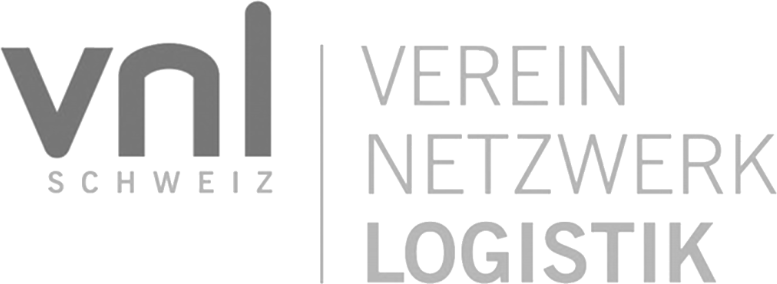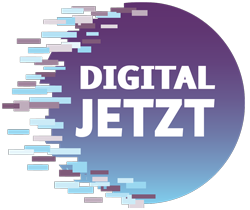LOGO consult participated in the call for suppliers and submitted processes from various LOGO customers. Emons, M&M, Fr. Meyer’s Sohn and IPSEN designed remarkable interlocked processes and implemented them together with LOGO consult in integrated software. Read more here: DVZ – Selling with system
But these 4 processes represent only a portion of the LOGO process landscape. With LOGO CRM, you control your sales activities optimally and all departments benefit from interlinked processes.
The economic forecasts look worrying. What does this mean for the importance of sales and customer care in the company?
Sales processes are often treated stepmotherly in logistics. For many years, logisticians didn’t actually have to do any selling, the goods were virtually placed on their doorstep. In recent years, the mass of goods was so large that it hardly had to be handled – again, no need to worry about sales, target customer acquisition or existing customer care.
But now the forecasts are different. If the economy really does weaken in the next few years, competitive pressure will also increase in logistics.
If you remember the last crisis in logistics, you know that the big and well-organised companies came out as winners and the small ones either had to fight hard or were simply swallowed up.
With good processes in sales, with technically supported sales controlling, with dashboards that make progressions visible and with alarms, companies can prepare themselves for the challenges of the next few years.
A company where the branch managers “also do a bit of selling” or where there is no transparency whatsoever as to which location works with which customer will struggle. This is even more extreme in internationally operating logistics groups. If no one knows which customers are served in which country, which routes are operated, what potential there is, a company can unwittingly create competition for itself. If international tenders are not consolidated and answered in a timely manner, the competition is ahead or the company ends up paying for it.
In sales processes, it is important to dovetail with the other areas in the company. In many companies, the sales department works without clear information about the customers’ shipment behaviour. Or information about credit limits, creditworthiness, insolvency, open items etc. is not available to sales. It is almost as fatal if the complaints of the customers, whether they are damage, service, term or billing complaints, are not accessible to sales. Then they are walking into the open when price increases have to be announced or new products are to be launched.
Target customers are often dealt with on the basis of sympathy rather than sales expectations. Structures in the “From Lead to Contract” process are often missing.
The consequence of these considerations is that in sales, the integration of the sales tool with the claims system, transport management system, quotation preparation, financial accounting and marketing is essential.
In a mature sales process, the information from marketing is available to sales so that targeted sales campaigns can be launched. The data for segmentation comes partly from the TMS, i.e. who has what profits or sales on which relation or in which transport mode. Offers with current status can come mixed from CRM and TMS and also provide information about turnover expectations and strategies in sales. Another factor that is created and managed in CRM are the sales opportunities with existing and target customers.
Campaigns with clear goals and successive stages are generated directly in CRM and controlled from CRM. The segmentation of the people to be approached is done via data in the CRM database, some of which comes in from interfaces and some of which was generated in CRM.
Opportunities can already be pre-qualified via connected call centre campaigns so that internal sales can proceed in an even more targeted manner. This saves valuable internal resources for cold calls. The call centre accesses the campaign created by Marketing with limited rights, the current status of which is visible to every campaign participant in the customer files and in the campaign. The call centre staff (or internal staff in the telephone pre-qualification phase of the campaign) can record the results of the conversations, potentials and promising contacts directly in the campaign.
The sales department now specifically approaches the promising contacts and submits its offers. Already during the first conversation, a potential is created for each offer, as far as this has not already been created in the call centre preliminary stage.
The potential runs through its sales stages with each subsequent contact and the sales forecast, together with the probability of closing the sales stage, fills the sales pipeline.
Identify your typical sales processes and the customer personas. Define the customer journeys and support your staff with good sales tips for each milestone.
Depending on the customer journey defined for the customer type, the steps are completed one after the other and it is always visible in the campaign as well as in the customer file where one is in the journey. Read here how customer journeys in logistics can look: “Customer Journey – Viel mehr als Sightseeing”
The Customer Journey module contains tips for salespeople on what steps they need to take to get to the next milestone, and it also shows what the deadline is here.
The customer lifecycle controls which addresses can be handled by whom and how long a salesperson has to win a prospect before it is returned to the general pool of target customer addresses.
Visualise KPI and developments in customised dashboards and views.
The Board View graphically shows which accounts are in which stage of the lifecycle and with drag and drop the salesperson can drag them to the next stage. If the prerequisites defined in the Customer Journey are not yet fulfilled, the salesperson is given advice on what actions they need to take next in order to complete the conversion to the next phase.
On dashboards, management can monitor at any time the development of potentials through the sales stages, the number of accounts per journey phase, the performance of the salespeople and the turnover with new and existing customers. Analysis tools within the campaign provide information about the progress of the actions at any time.
Graphical evaluations allow a quick overview of the development of the offers per salesperson and their status.
When comparing the potentials with the shipments of existing customers, the potential analysis per customer or per salesperson shows a target-performance comparison at any time.
LOGO CRM enables sales reporting in which real figures are compared with sales activities.
The Sales Performance Monitor provides sales staff and supervisors with information at any time on whether the targets agreed with the sales staff can be achieved. In this way, the pipeline can always be refilled during the year and the employees do not only see shortly before the annual meeting that they will not be able to achieve their goals.
The Sales Controlling Tool makes the calculations for the bonus calculations and forms the basis for target discussions and commission payments.
The Sales Reporting Tool relieves the workload of the sales staff, as regular sales reports no longer have to be created manually, but are generated automatically according to predefined rules: Which customers of the sales employee have generated the most turnover / profit in the last month? Which relations were newly activated? Which loss customers were reactivated? Which potentials could be raised to a new sales level? Which target customers were raised to a new level in the life cycle? How many call reports and appointments were made? How many tasks were completed? How many new target customers were created? How did the turnover of new and existing customers develop?
All this information is contained in a well-rehearsed and integrated CRM database and only needs to be identified and visualised through good logics.
Management’s strategic decisions on which products, relations, services and sectors to deal with more intensively in the future and which are more likely to be cut back due to lack of profitability can be underpinned with data from CRM.
The value of customers and the development of their shipment behaviour are visible to every employee in the customer file and customer communication can be adjusted accordingly.
Every customer and target customer has one or more account managers, so that every employee can immediately see which branch, which country, which division is already in contact with the customer.
Cross-selling potential can be quickly and easily captured directly from the call report. Alarms are automatically triggered when certain business areas are marked. Thus, the responsible employee can contact the customer without delay and present the further services.
Customer satisfaction is regularly queried during customer meetings, entered directly in the call report and constantly evaluated. For the ISO audits, the data are available in the CRM.
Larger-scale customer satisfaction surveys are controlled via a campaign in CRM and sent out via a mailing that includes a link to a landing page with the questionnaire. The answers are automatically reported back to CRM, generate documents in the customer files and control the status of the contacts in the campaign. Evaluation tools in the campaign show the results at any time. No external tools have to be connected, no unspecific results of the customer satisfaction survey have to be evaluated.
Give your employees in customer care and sales powerful software tools and support them in reaching their goals.
Invitations to events, trade fairs, customer events are controlled and evaluated via campaigns in CRM. Mailings with links to landing pages for feedback and registrations let the results run directly back into the CRM.
DSGVO processes run directly in the CRM. Mailings are sent out to obtain the double opt-in. Feedback is displayed in the contact as well as in the campaign and can be tracked at any time. Mailing blocks are set automatically. All DSGVO processes can be mapped in the CRM.
Business cards from trade fairs and events are scanned and sent to the CRM. Contacts are automatically created or added. The corresponding call reports can be entered without delay or e-mails to the new contacts are immediately assigned correctly in the CRM.
Call reports can be dictated from a mobile device. This means that customer contacts are documented much more quickly and reliably and internal transparency is improved.
Sales appointments are created in CRM and automatically enriched with addresses and phone numbers that can be used on the smartphone for navigation and calls. The appointments are also displayed in the Outlook group calendar. Appointment invitations to colleagues and customers are sent from the CRM and feedback is displayed in the CRM and sent by e-mail.
An info panel in the CRM displays current information for the user to take care of.
The app “My CRM” displays all relevant information for the user as well as his tasks and appointments.
Realise how much better your sales can work and how much better sales activities can be controlled when processes are precisely defined and supported with software.
Work out with the experienced consultants from LOGO consult how your company can also master the challenges of the next few years with customised sales processes and secure its place in the competition.













